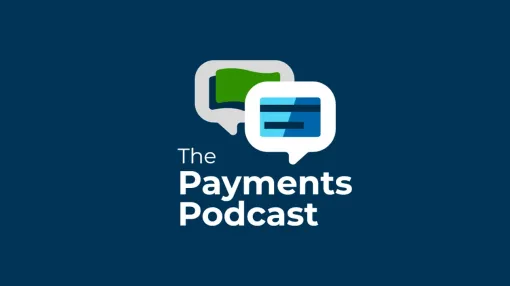If there’s a topic that doesn’t get enough play in this “faster, instant and real-time” world of business payments it’s the user experience. To an extent, the UX is why a commercial customer will rate their onboarding process a “three” or a ten on the satisfaction scale. It certainly gets a lot of attention if the topic is consumer payments. Any number of fintechs from PayPal to Chime to Revolut will attest to that. Business payments need to play on the same level as the intuitive and accessible interfaces of the consumer user experience.
How to achieve that experience? We asked Kellie White about that and some other UX-related issues. White is the head of user experience at Bottomline and has spent her 20-year career delivering engaging digital experiences in several roles within various digital contexts, ranging from creative agency to product development and consultancy.
Q: When you read about trends in the business payments world UX doesn’t get as much attention as the speed or volume we associate with them. But you’re tracking several trends, and I’d like to know that when you review all of them, what are you most passionate about?
White: That’s a difficult one to answer because I see them as all being intrinsically linked, but if I had to pick one, I’d call out ‘Intelligent Hubs’ as my favorite. It’s been a topic that I’ve been passionate about for a while. They’re a highly dynamic and personalized center of activity in an application. It’s the typical starting and returning point in the user journey, and it surfaces the most meaningful changes for people to act on within their specific business contexts and roles, with root causes, metrics, and actionable insights.
Q: Could you explain what you mean by a personalized experience in a business context?
White: Sure, there are degrees of personalization from the quite simple (if you bought this you might want that) to far more complex implementations where systems learn what people need and want by watching what they do. Here's the way that an intelligent hub works: Information is surfaced to a person dependent on who they are, what permissions they have, and the capabilities they have access to, from across a broad range of products and services in an application suite. The intelligence comes in through uniquely composing the bigger picture for someone intuitively, with Data, Analytics and AI powering the content and insights bubbled up to them.
Q: If you had a roomful of 500 bankers and 500 corporates, what would you tell them about these trends? How would you get them to prioritize UX?
White: Well, the first thing I’d say is that there’s never been a more exciting time for creating a great user experience. There's so much opportunity to provide better experiences that are more helpful, holistic, and human than we’ve had in the past. I’d also add that effective design is no longer a nice to have, it’s a must have. Enterprise applications have trailed behind the experiences on mobile apps we’ve become accustomed to. This has largely been because of how they were built in the first place, unable to adapt and unable to emulate the connected experiences we’ve become used to on our devices, where apps are aware of one another and share information with absolute ease. It’s been difficult to achieve the type of fluid user experiences that we’ve wanted to because of this.
Q: Have we as an industry overcomplicated processes and experiences here? How can we avoid that in the future?
White: Yes, Steve Jobs once said, “you’ve got to start with the customer experience and work backwards to the technology.” I think that’s what the problem’s been. We’ve started with things the other way around in a lot of circumstances. Thankfully, this has all changed over time. Applications are now being built in a modular fashion made up of reusable smaller parts. Whether they’re a service or a component, each is independent but can share information and be put together in diverse ways to create new, targeted experiences. So, to round off, people need simplicity, immediacy, and availability, and have come to expect linked experiences that support this, with real-time data sharing between tools and people.
Q: Why should UX matter to finance leaders as they become more digitally savvy?
White: I’m sure everyone has heard this many times over: Customer and user experience play a pivotal role in the growth of businesses everywhere. If we make things easier and faster to do because they’re better designed, by removing obstacles and really understanding what people need and then delivering on that, we improve efficiency, which absolutely helps businesses. If we make things more enjoyable to do, we increase engagement with work, it’s a solution where everyone benefits.
Q: We hear a lot about the consumerization of business payments. How does UX intersect with that trend?
White: Well, it’s a great question because at its heart, this trend has everything to do with UX. We’ve all become accustomed to the experiences offered on mobile phones in our day-to-day personal lives, whether online banking or buying something on Amazon. We’ve called this out many times in our conversation today. It’s just so much quicker and easier to get things done. When things don’t work in this way, the outcome is never good, people just get frustrated and go someplace else which offers them a better experience. People have come to expect the same experiences in their work lives as they get in their personal lives. Look at the ease of reviewing an invoice digitally, for example, and making a payment with a click of a button rather than using a check book. It’s instant.
Q: So, how does this design strategy affect the outcome?
White: Well, we’re super mindful when designing these experiences that we don’t overcomplicate things, with too much information and too many options, which is distracting. We drive towards being reductionist in our design approach, taking away everything that’s not necessary until we get to the fundamental experience, which is always the most streamlined, because we know that’s how people will be successful in a task. So, if we flip this towards business payments, our job is now to do the same thing that we’ve been doing in the consumer space. Reduce, and automate, make things instant or as close to real-time as we can, remove obstacles like unnecessary manual and paper-based processes. Our job is to make business payments work better for everyone.
Kellie White was interviewed by DesignRush, a B2B marketplace connecting businesses with agencies.


